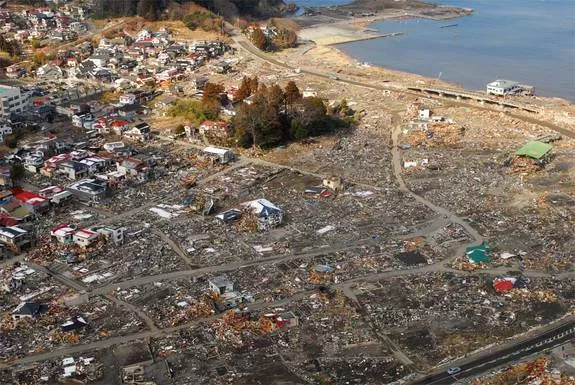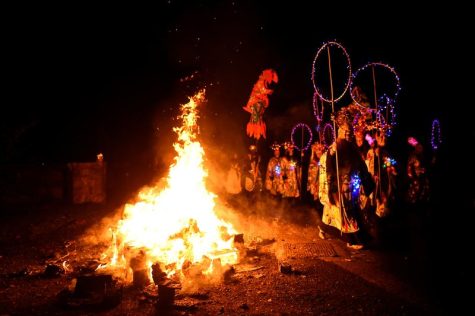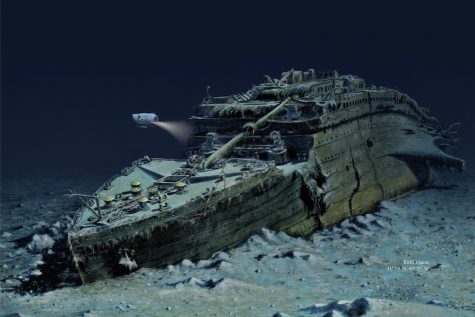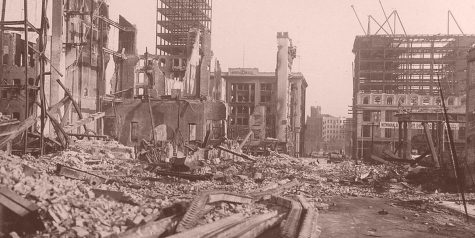A disastrous year
Tohoku Earthquake and Tsunami, Fukushima Daiichi Nuclear Disaster

November 4, 2021
Throughout history many things happen, for better or worse. Through all of them, no spot in the world has escaped its fate, but Japan had a catastrophe in 2011, involving: an earthquake, a tsunami, and a nuclear disaster. In general, this had a lot of impact on the overall development of quite a few areas, and the aftermath was unsettling.
In Japan during March 2011 a magnitude nine earthquake struck northeastern Japan, creating a horrifying tsunami. The effects were felt from Norway’s fjord (deep, narrow, and elongated sea or lake drain. If the geographical formation is wider than it is long, it would be a bay or cove instead) to even Antarctica’s ice sheets. The debris left behind has washed up on American beaches for years.
In Japan there were 150,000 evacuees who lost their homes, and 50,000 were still in temporary housing. Over 120,000 buildings were destroyed and 278,000 were half destroyed. The 2011 Tohoku earthquake occurred offshore of Japan, on a subduction zone where two of the planet’s tectonic plates collided. East of Japan, the Pacific plate dived beneath the overriding Eurasian plate, releasing centuries of built stress between the two plates.
The March 11 earthquake occurred during Friday at 2:46 p.m. local time, the earthquake was centered about 45 miles east of Tohoku on the sea floor, the depth being 15 miles below the surface. The effects lasted about six minutes. Scientists drilled after the earthquake, discovering a thin and slippery layer of clay lining the fault. It is believed the clay allowed the plates to travel about 164 feet. (Confirmed deaths is 15,894 and over 2500 were still missing by June of 2016.)
The first tsunami hit Japan less than an hour after, the tsunami reached run-up heights up to 128 feet at Miyako city, and it traveled inland up to 6 miles in Sendai. The flooded area was estimated to be about 217 square miles. Waves over-topped and destroyed tsunami walls in several locations, the surge even destroyed buildings with 3 stories where people gathered for safety. Near Oarai, the tsunami generated an off-shore whirlpool that was captured on video.
In turn, the tsunami had caused a meltdown by cooling system failure at the Fukushuma Daiichi nuclear power plant, and created a level seven nuclear meltdown and a release of radioactive materials. The electrical power and back-up generators were all overwhelmed by the tsunami and caused the cooling problem. The earthquake was irrelevant, but the plant was unprepared for such a powerful tsunami. The government underestimated the power of this tragedy during prediction, and only 58% of people actually moved after warning of the earthquake and assumed the tsunami would have been the size of the normal tsunamis they experienced. After this occurred, scientists from all around the world went to Japan. They studied off-shore and dropped sensors along the fault to measure what may have also contributed to the earthquake. They also studied tsunami deposits for ancient sediment records of the deadly waves. Japan scientists said the tsunami itself had died out long ago, however, effects will last for decades.
And now for some mind-blowing facts:
- The earthquake shifted Earth on its axis of rotation by redistributing mass, like putting a dent in a spinning top. The temblor also shortened the length of a day by about a microsecond.
- Over 5,000 aftershocks occurred in Japan during the year of the earthquake, the largest being a magnitude of 7.9.
- The earthquake produced a low-frequency rumble called infrasound, which traveled into space and was detected by the Goce satellite.
- Around 250 miles of Japan’s northern Honshu coastline dropped dropped by two feet according to the U.S. Geological survey.
- Japan’s main island of Honshu east by just about eight feet due to a jolt.











